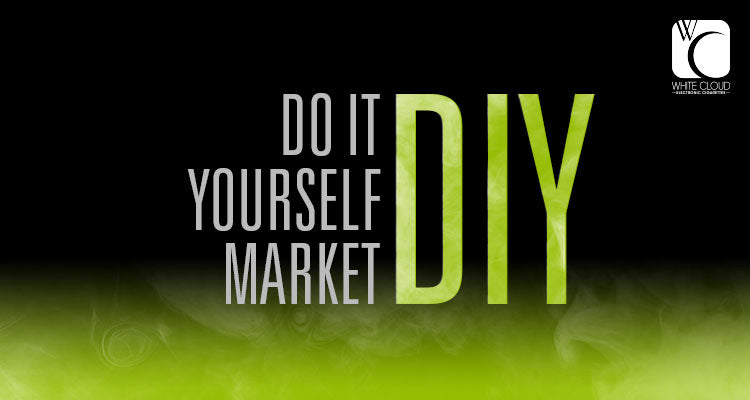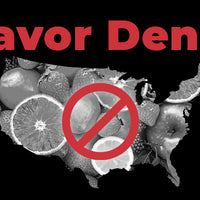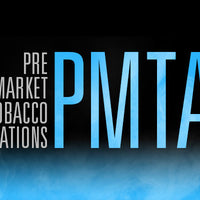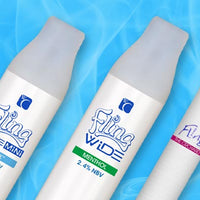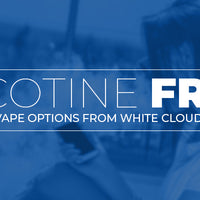Although the FDA’s Deeming Regulations are contained within an extensive 499-page document, some areas of regulation were left a bit hazy. Among the haze is how the regulations affect the DIY vaping market, or more specifically how the rules will affect the individual components that make up electronic cigarettes and e-liquids.
FDA Deeming vs. The DIY Vaping Market
When it comes to the FDA’s regulation of vapor products, there have been tons of questions about how the rules affect the DIY vaping market. Vapers who create vaping products for their own use have questioned if and how the regulations will affect them, which is why we received quite a few questions about the DIY market during our DeMISTified Webinar Series. Those questions are listed below with answers from the experts.
How will the vaping regulations affect the DIY market?
The regulations do not affect consumers creating e-cigarette products for their own consumption; however, if consumers create vapor products or components to be used outside of personal consumption, then they would be considered tobacco manufacturers and would be subject to the deeming rule. According to the FDA, a tobacco retailer is:
Any person, government, or entity who:- Sells tobacco products to individuals for personal consumption, or
- Operates a facility where vending machines or self-service displays of tobacco products are permitted. Retailers include brick and mortar stores and online tobacco retailers.
In an article titled “F.D.A Imposes Rules for E-Cigarettes in a Landmark Move”, Mitch Zeller, the Director of the Center for Tobacco Products for the FDA, stated, “There are retailers selling these products, but in the back room, they are also mixing. That means under the law, they are manufacturers.”
There is speculation among experts, including Dr. Michael Siegel, that a vaping black market will arise as a result of strict regulations, as consumers will now have to seek out their favorite DIY juices and vaping devices and components under the table. As the American Vaping Association says, “This is not regulation — it’s prohibition.” And, we will most likely see history repeat itself in terms of the failed prohibition on alcohol back in the 1920s.
Can a shop sell each ingredient separately and have the consumer blend it at home?
Technically, yes: A shop could sell each ingredient separately for the consumer to blend at home; however, each ingredient would then be subject to a separate PMTA process if the sale’s intent is for the ingredient to be used to create an e-liquid and/or be used with a tobacco product. It all depends on the purpose of the end use.
How difficult will it be to purchase DIY e-liquid, PG, VG, flavorings, and parts for mods?
It will be very difficult to purchase DIY e-liquid, PG, VG, and flavorings if you’re looking to purchase from vape shops. Prior to the August 8, 2016 deadline, there was talk amongst the Reddit community about users buying e-liquid ingredients in bulk in an attempt to stock up so they could continue creating their own e-liquids.
Are there restrictions on individuals purchasing liquid nicotine with the regulations in effect?
Although nicotine can be derived from vegetables, such as potatoes and eggplant, and can be synthetically created, it is most well-known for being derived from tobacco plants, which is why the FDA places it in the same category as tobacco products for deeming regulations. So, since nicotine is considered a tobacco product, the same restrictions that apply to tobacco products also apply to liquid nicotine, particularly purchase age. It’s best to become familiar with the age restrictions for tobacco products in your region.
Are parts and accessories included in the regulations?
Yes, according to the regulations, if an accessory, component, or part can be used for human consumption with an electronic nicotine delivery system, then it must follow the rules listed in the regulations.
According to page 3 of the deeming regulations, this includes:
“E-liquids; atomizers; batteries (with or without variable voltage); cartomizers (atomizer plus replaceable fluid-filled cartridge); digital display/lights to adjust settings; clearomisers, tank systems, flavors, vials that contain e-liquids, and programmable software.”
So, what does this mean? Let’s take a look at a few examples:
1. Lithium Polymer (LiPo) Battery
Lithium polymer batteries were originally designed to use in radio-controlled cars and model trains. Now, we use them in our mobile devices such as tablets, smartphones, and even our rechargeable e-cigs. This is the same battery White Cloud uses for both our Cirrus rechargeable and Fling disposable e-cig lines.Another type of battery used in vaping devices and subject to regulations is the lithium-ion battery. These batteries are commonly used with more Advanced Personal Vaporizers (APVs), Mods, and other highly customizable vaping devices.
Related: E-Cig Batteries: Lithium Polymer vs. Lithium-Ion
2. Cotton Wadding
With electronic cigarettes, cotton wadding soaks up the e-liquid to be vaporized and is most often used with pre-filled e-cig cartridges for cig-a-like products. Cotton wadding is now labeled as a tobacco product if you want to buy it at a vape shop. However, if you purchase cotton wadding from a retail store like Walgreens, it is not considered a tobacco product.
These examples are labeled as tobacco accessories because they can be used for tobacco consumption. If you are knowingly selling for tobacco consumption, you must follow the rules set forth by the regulations.
How Does the FDA Define an Accessory for Tobacco Products?
In the FDA’s Small Entity Guidance Guide, they explain their definition of an accessory for a tobacco product:
(1) Is not intended or reasonably expected to affect or alter the performance, composition, constituents, or characteristics of a tobacco product; or
(2) Is intended or reasonably expected to affect or maintain the performance, composition, constituents, or characteristics of a tobacco product but (i) Solely controls moisture and/or temperature of a stored tobacco product; or (ii) Solely provides an external heat source to initiate but not maintain combustion of a tobacco product (parts 1100, 1140, 1143 (21 CFR parts 1100, 1140, 1143)).
Accessories of regulated tobacco products that are not required to follow the FDA’s ruling include carrying cases, lanyards, and holsters.
Do flavoring components have to meet regulations?"
Again, this is another part of the FDA’s Deeming Regulations that is based on the intent of sale. Ask yourself: Is the intent to sell a flavor to be used for e-liquid? If the answer is yes, then you are subject to the regulations. It all comes down to intent to sell. If you are an e-liquid manufacturer, meaning you are purchasing flavorings to be used in the creation of e-liquids, then you are responsible for meeting the regulations.
The good news for vapers is that, while the White House’s Office of Management and Budget (OMB) was reviewing the finalized version of the FDA’s Deeming Regulations, they apparently deleted part of the FDA’s planned policy that would have removed all flavored e-liquids from the market within 90 days after August 8, 2016. This is the version we see today in the US Federal Register.
The bad news for e-cigarettes is that anti-smoking activists are continuing to argue that flavored e-cigarette products appeal to youth, and are working on new regulations that they hope will extend to flavor bans in the future.
